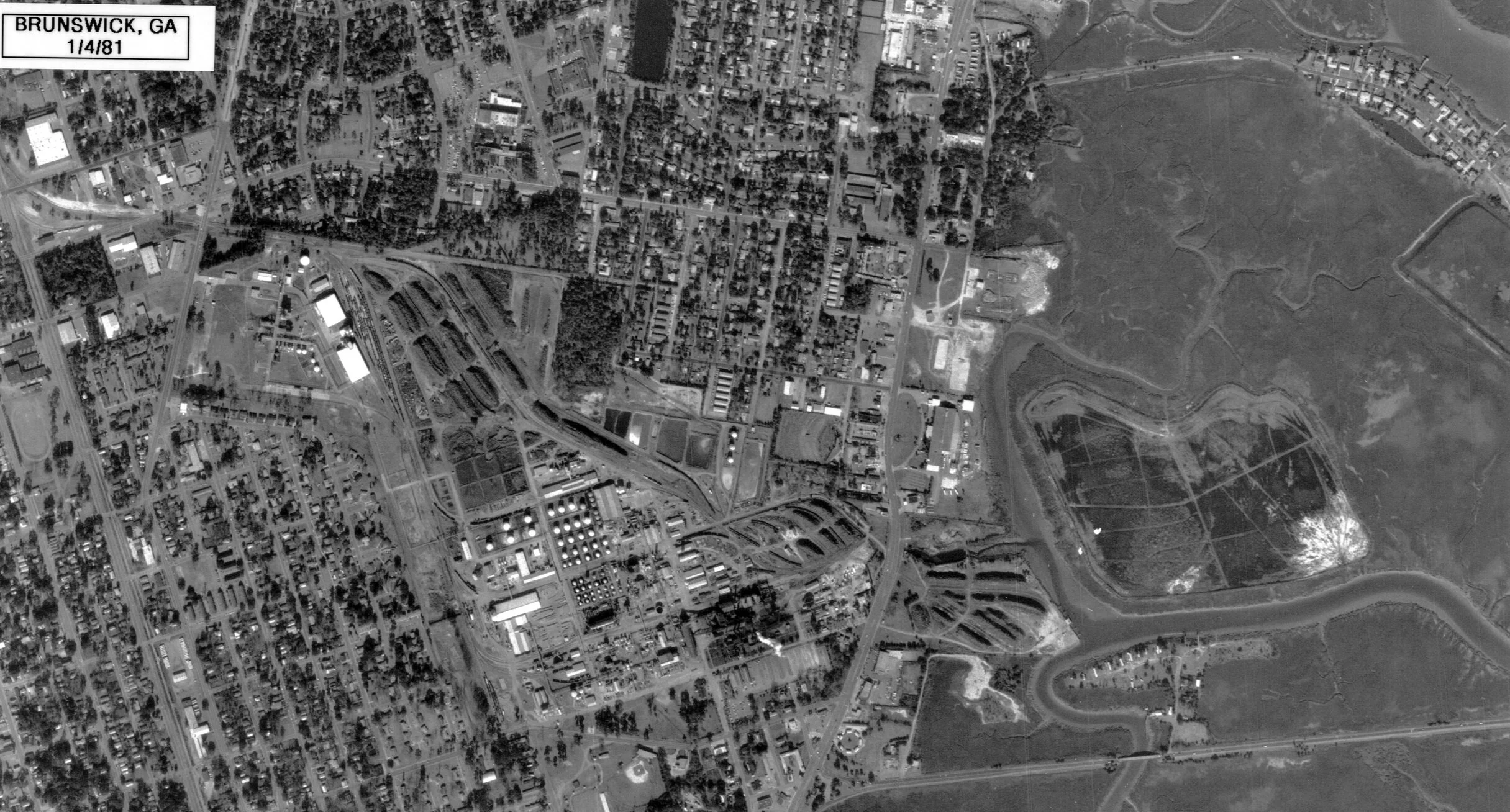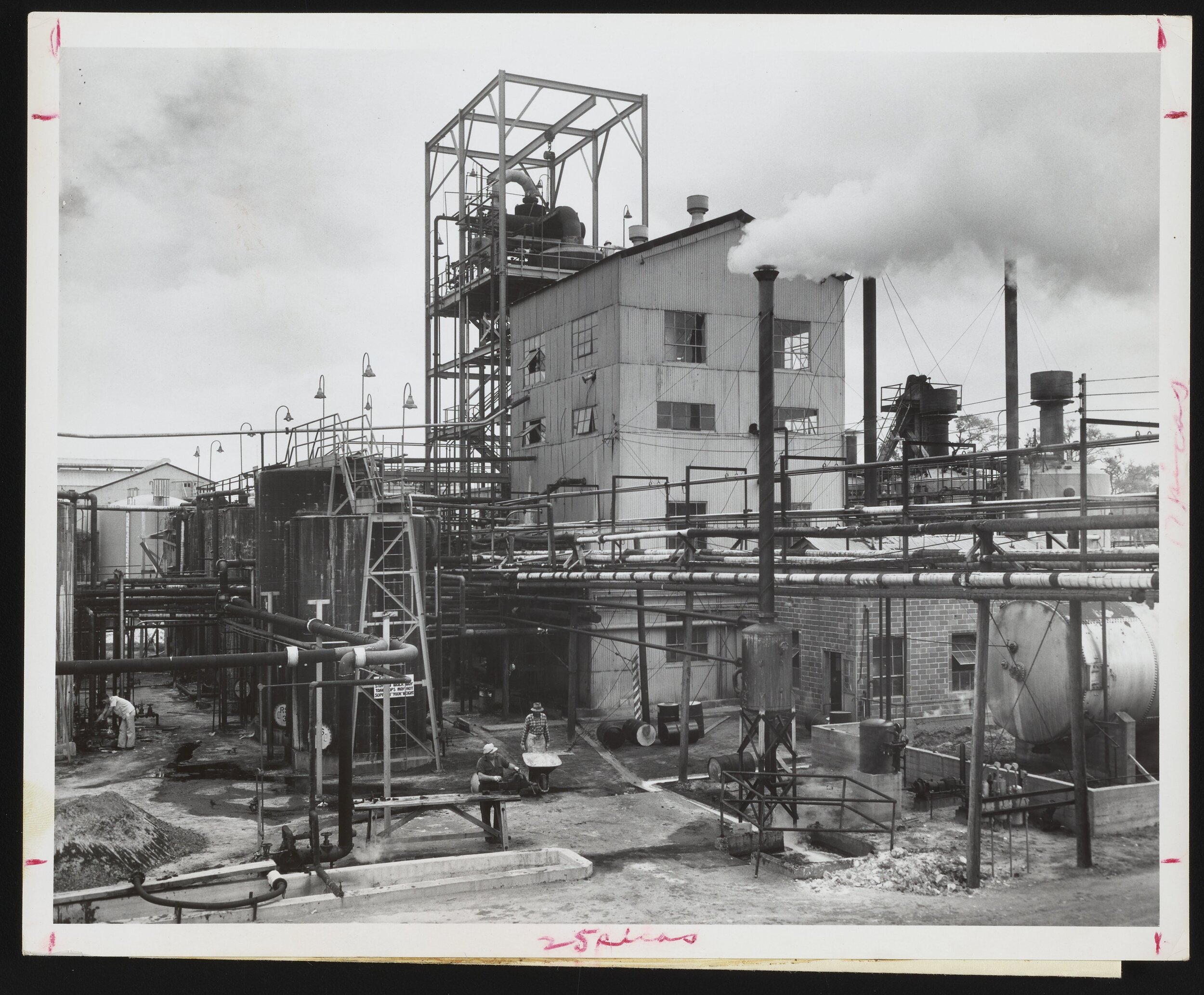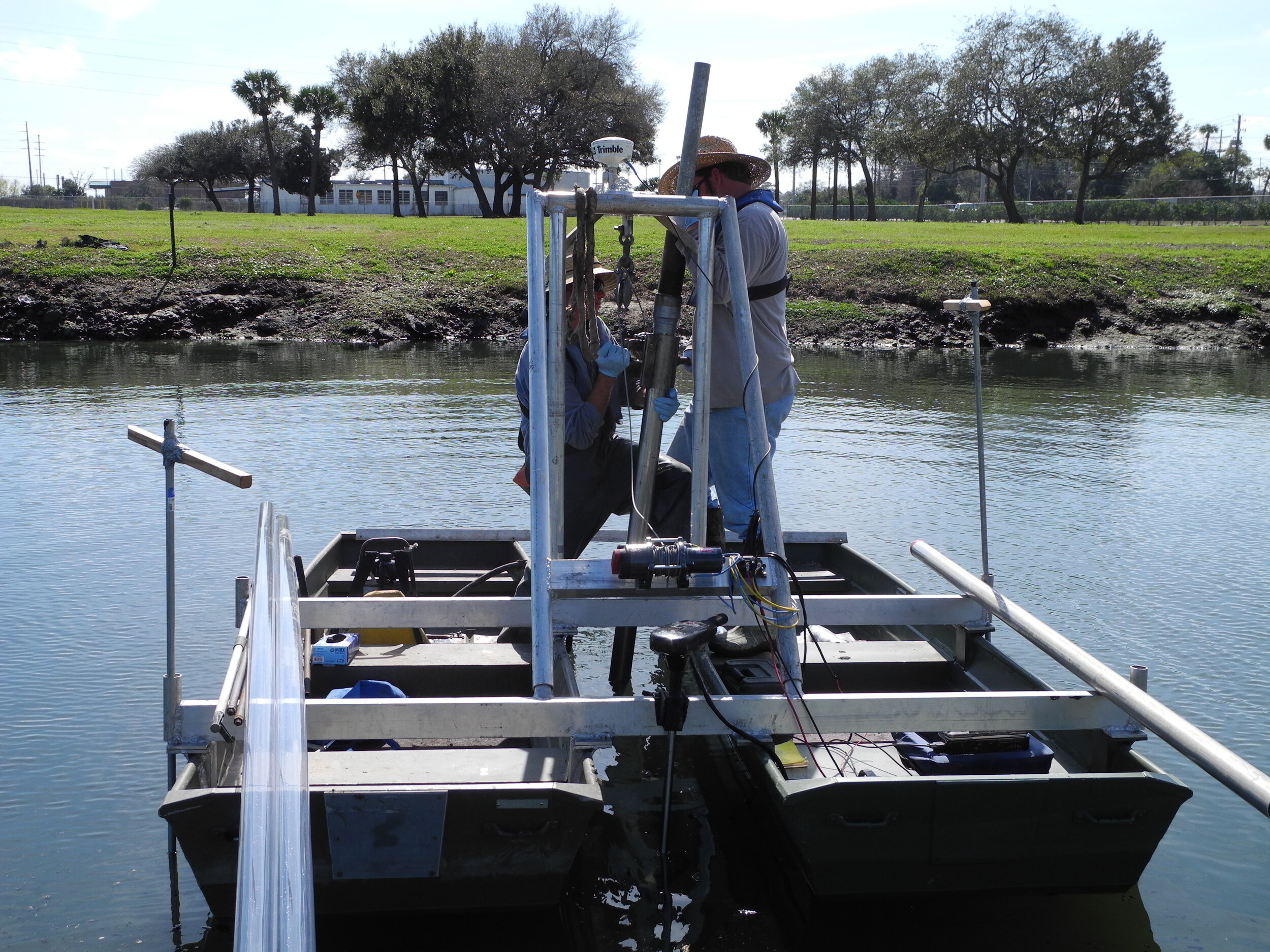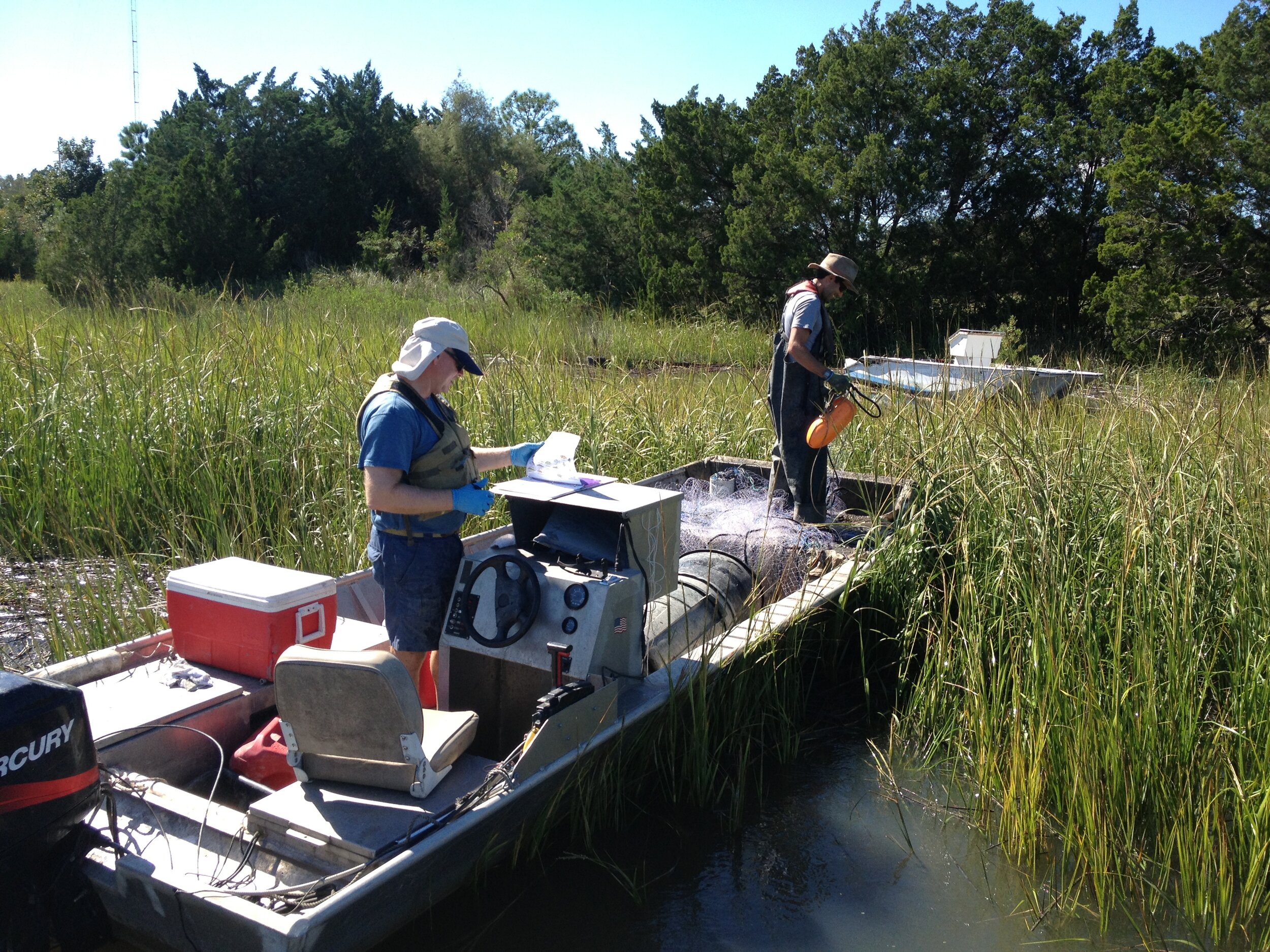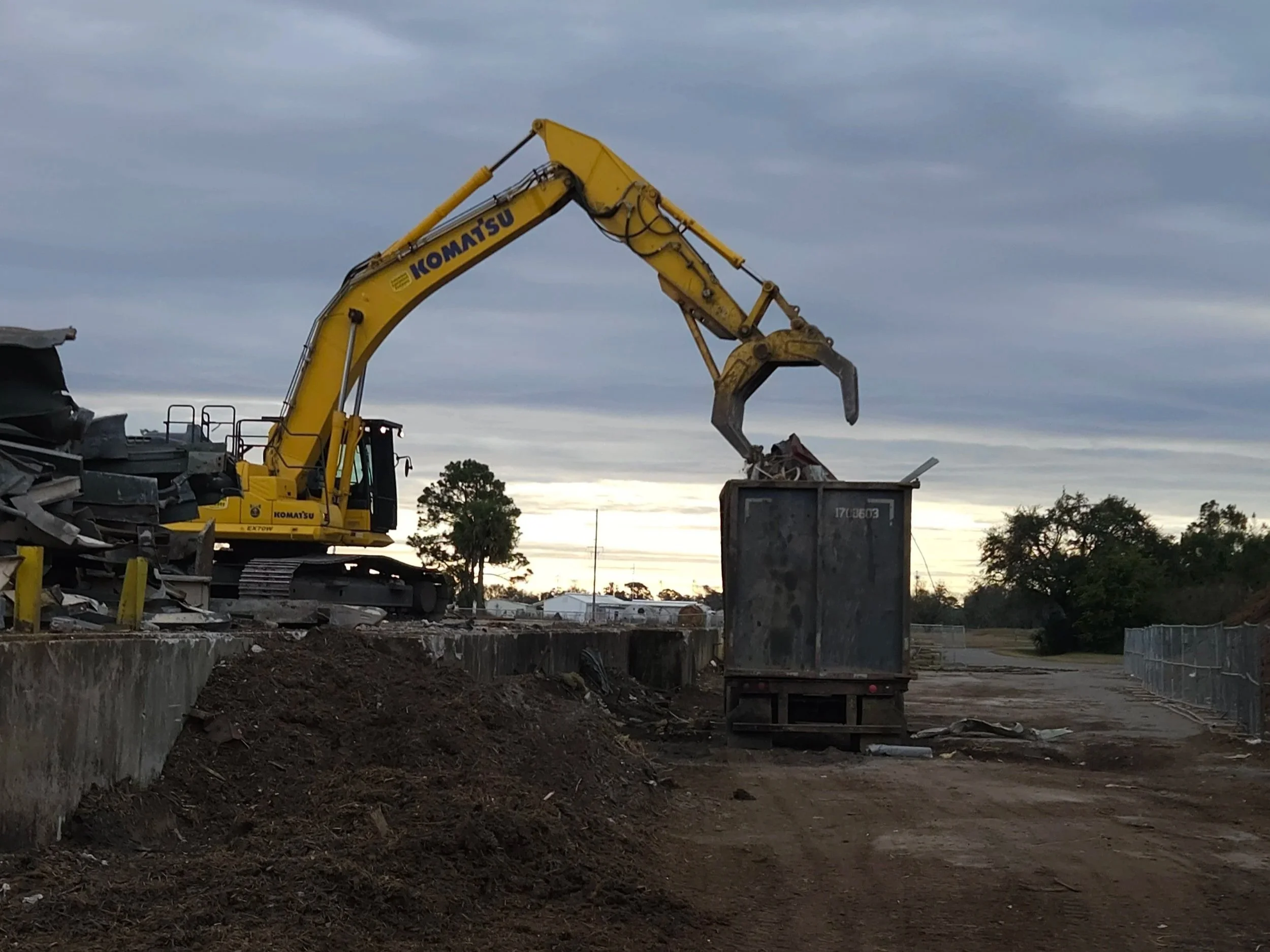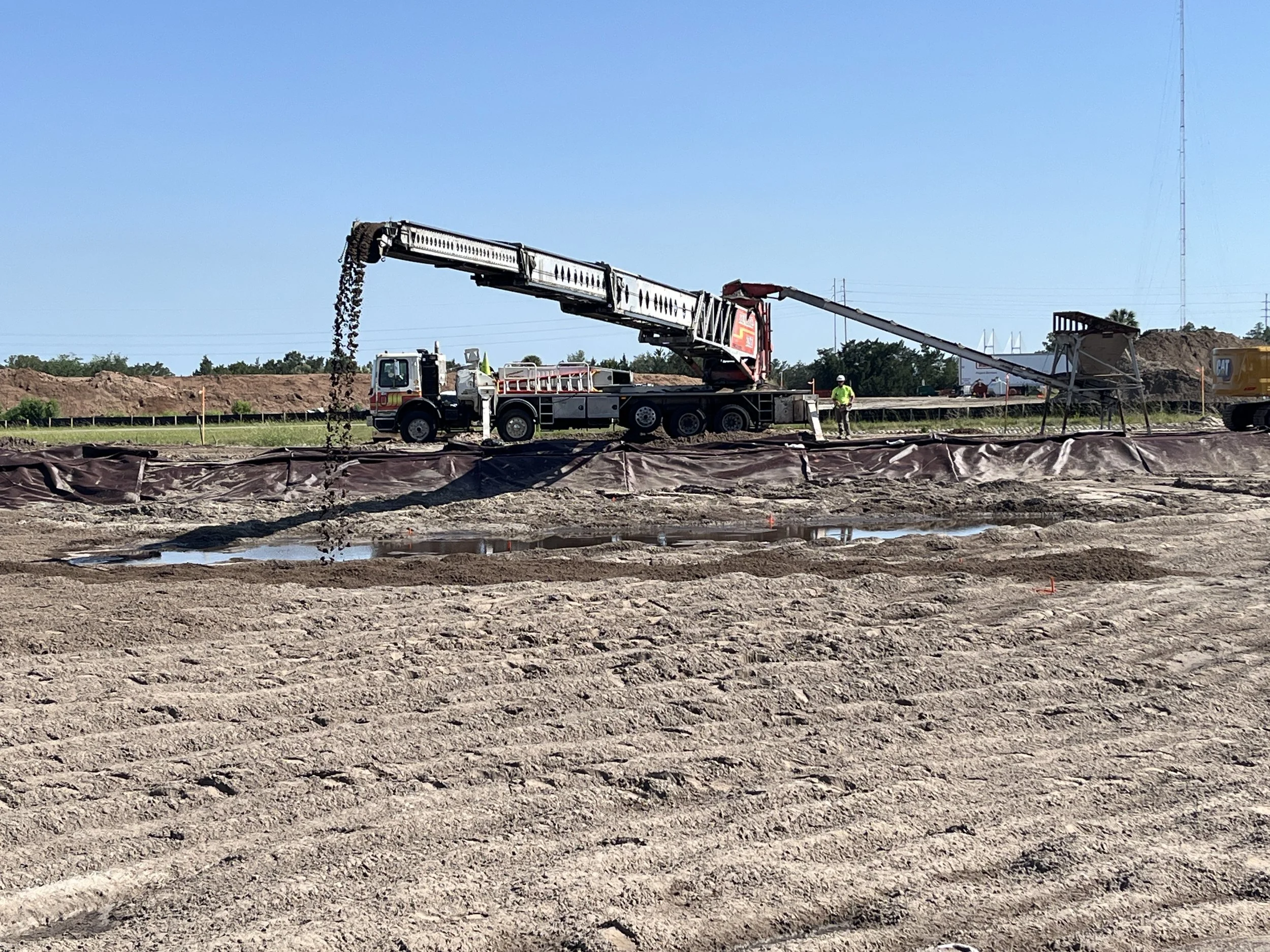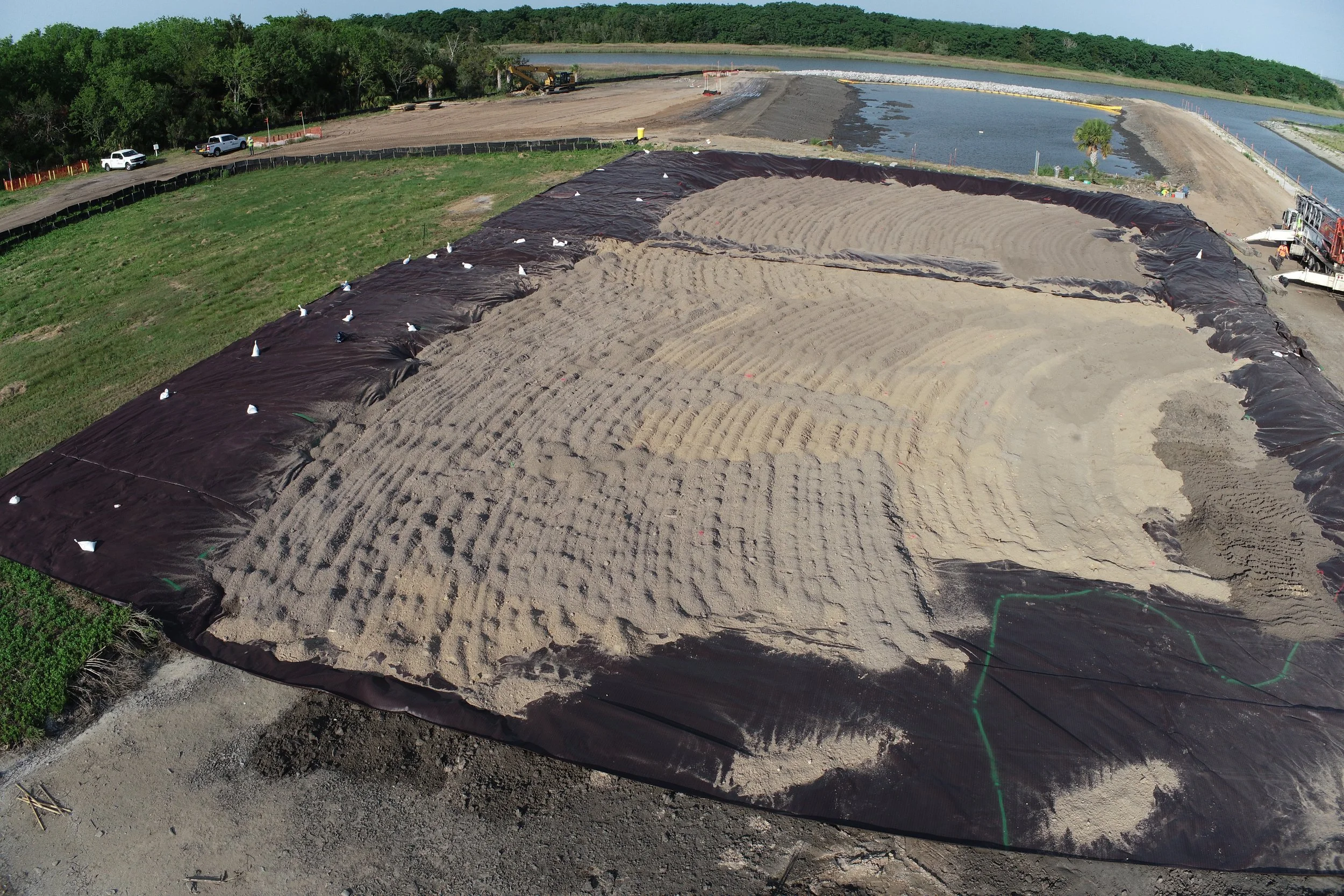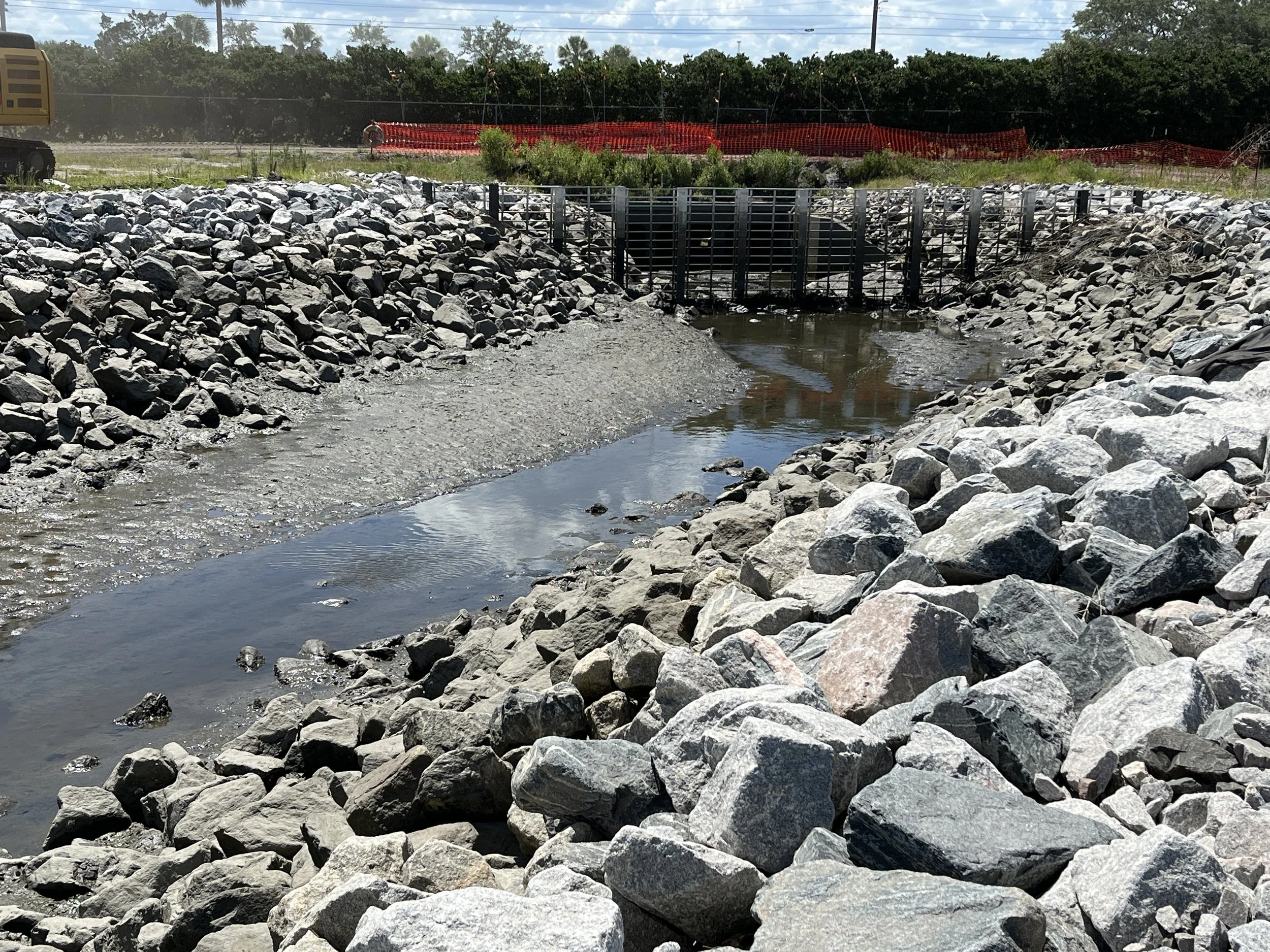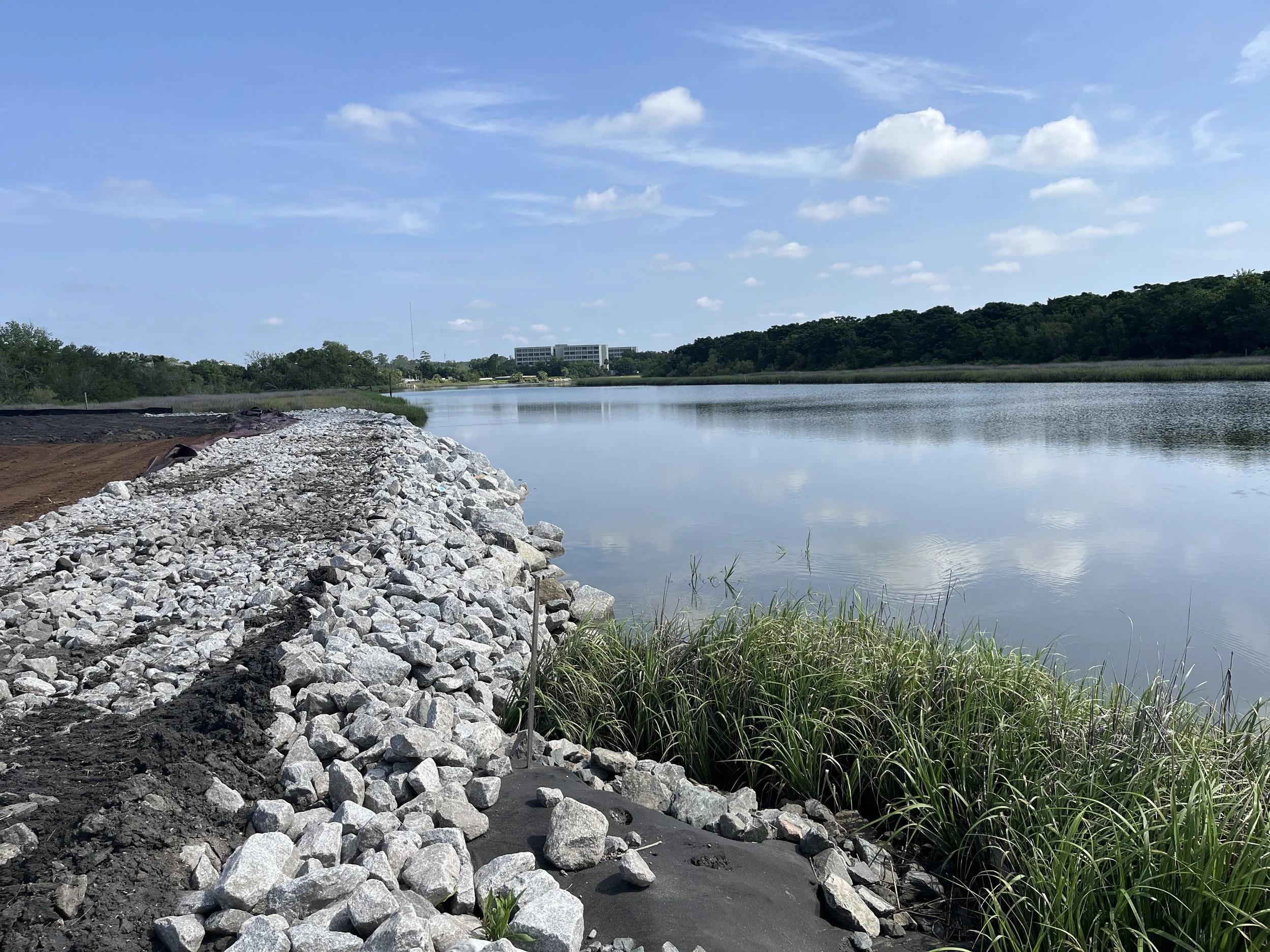Making Products that people use
Hercules technician uses a reactor flask in the laboratory, circa 1960.
Hercules Brunswick facility, circa 1960.
As a major economic force, Hercules grew along with Brunswick. The Brunswick facility, located on Glynn Avenue near the causeway bridge, had a long history of manufacturing operations that spanned more than a century. With the exception of the Great Depression years, it operated since 1911, using pine tree stumps to make rosin and other products.
Since the advent of state and federal environmental regulations, much has been accomplished to address the environmental legacy of these historical operations.
In 2023, a fire caused the permanent shut down of the facility. In 2025, demolition activities on the physical structures of the facility were completed. Remediation at the site did not stop and is still continuing with a focus toward reuse of the property.
100+ Years of History
Generations of Brunswick people worked at the Brunswick facility when it was operated by Hercules, and then by Pinova from 2010 through 2023. Even after its operations ceased, Hercules has been conducting environmental remediation and restoration at three sites in Brunswick. A timeline summarizing the history of operations and remediation at these three sites is below.
Sediment dredged in Terry Creek
Sediment removed in Terry Creek
Lining of the N-Street Ditch
Sampling sediment from Terry Creek
Collecting field samples
Monitoring fish tissue in Terry Creek
Monitoring fish tissue in Back River
Collecting soil samples
Workers implement “ISS” remedy at the plant
Soil being loaded for disposal
Constructing the new channel
Excavator working on OU1 remedy
Scrap metal being segregated during plant demolition
Soil excavation at the plant
Capping of OU1 with telebelt system to create sand cap
Lining of outfall ditch before sand and soil placement
Gate installed to prevent manatees from swimming into culvert
Rock dam installed along Dupree Creek
Investigation of marsh areas near the site
| 1911 | The Brunswick naval stores plant opened, using an innovative new process to extract rosin from pine tree stumps. |
| 1920 | Hercules began operating at the Brunswick facility, producing rosin and turpentine from pine stumps. |
| 1914 - 1944 | Hercules corporation entered the war efforts, producing smokeless powder during World War I and munitions during World War II at some of its other plants. In 1944, the Brunswick facility was awarded the Army-Navy E flag for its contributions to the Allies' victory. |
| 1946 | Hercules began to produce a new insecticide called "toxaphene" to combat boll weevils in the South. Some wastewater from the toxaphene production plant at the facility was conveyed through a ditch to Dupree Creek. |
| 1949 | Hercules' chemists continued to develop and refine new products. The workforce grew to nearly 800 people. |
| 1950 | Railroad capacity at the Brunswick facility expanded. Agricultural demand for toxaphene increased. |
| 1951 | The workforce at the Brunswick facility grew to 900 people. |
| 1957 | A new unit began producing rosin used to make synthetic rubber. |
| 1960s | The plant continues to prosper and adopt new technologies (Labors of a Modern Hercules, D. Dyer, 1990). |
| 1970s - 1980s | The U.S. Army Corps of Engineers dredged Dupree and Terry Creeks, placing the dredged spoils in three areas along the creeks. |
| 1980 | Production of toxaphene ended. |
| 1980s | Hercules began to investigate and remediate the site. Wastewater impoundments located in the northern portion of the facility were closed and the waste was disposed in a secure landfill. A groundwater monitoring well network was installed. |
| 1984 | The |
| 1990s | Hercules continued investigation and remediation at the plant. It removed and remediated an equalization basin and above-ground storage tanks in the northern portion of the facility and conducted biological treatment in the area to prevent contaminants from being carried in groundwater. |
| 1993 | EPA approved Hercules' remediation plan for the 009 Landfill. |
| 1995 - 2009 | Hercules installed and operated a groundwater pump and treat system to extract and treat groundwater from the northern portion of the Brunswick facility. |
| Mid-late 1990s | Hercules removed and disposed of soils found under the former toxaphene production plant, down to the groundwater table. |
| 1997 | Hercules began extensive sampling of soil and sediment at the Terry Creek site under EPA oversight. |
| 1999 | Hercules completed construction of the 009 Landfill cap and installed a comprehensive monitoring system. |
| 1999 - 2000 | Hercules removed approximately 30,000 tons of contaminated sediments from the outfall ditch and adjacent creeks and entered into an agreement with EPA to evaluate risks and additional remediation. |
| 2000s | Hercules continued its investigation to identify areas to be remediated. Hundreds of acres, above and below ground, were sampled and studied extensively. |
| 2001 | The state conducted fish tissue sampling showing improvement in fish tissue quality after Hercules’ remediation of the outfall ditch and creeks. |
| 2005 | Hercules resumed the state's fish tissue sampling, confirming continued improvements in fish tissue quality. |
| 2005 | Hercules leases a portion of the 009 Landfill cap to be used by the neighboring auto dealer as a part of its car lot. An asphalt cap is built on top of the exisitng landfill cap. |
| 2007 | The state relaxed fish consumption advisories after remediation activities in the outfall ditch and the adjacent creeks resulted in improvements. |
| 2008 - 2010 | Hercules remediated the former toxaphene production plant and the N-Street ditch: demolishing the plant, excavating 47,000 tons of soil from the plant and the ditch, backfilling the plant area, and relining the ditch. |
| 2010 | Pinova purchased the operational portions of the Brunswick facility. |
| 2010s | Hercules further investigated groundwater conditions, assessed potential risks, and planned additional remediation work. |
| 2012 | Hercules investigated the outfall ditch to design the next phase of remediation. |
| 2014 | The Wildlife Habitat Council (WHC) certified a wildflower field that was planted on a portion of the Brunswick facility. |
| 2015 | WHC certified a portion of the 009 Landfill for its enhanced habitat for birds and reptiles. |
| 2015 | EPA issued a proposed plan to remediate the outfall ditch at the Terry Creek site following more than seven years of investigation, planning and public meetings. |
| 2015 | Hercules installed and later upgraded a shallow groundwater remediation system on-site. |
| 2017 | EPA selected the final interim remedy for the outfall ditch to include capping the ditch and relocating the outfall. EPD concurred with the remedy selection. |
| 2018 | The state relaxed fish consumption advisories again based on improvement in fish tissue sampling - a result of Hercules’ remediation. |
| 2018 | Hercules committed through a consent decree to implement EPA's selected interim remedy and to reimburse EPA for all of its past and future costs. |
| 2019 | Hercules remediated areas of toxaphene in soil and around the former toxaphene tank farm storage area. |
| November 2019 | A federal court in Georgia approved the consent decree for the interim remedy and found the agreement to be fair, reasonable, and in the public interest. |
| 2020 | Hercules expanded forest habitat certified by WHC and continues to monitor nesting birds, pollinators, mammals, and forest habitat while taking care of the wildflower field. |
| 2020 | Hercules added more grassland habitat to WHC program while monitoring birds, reptiles, amphibians, and pollinators. |
| 2020 | EPD renewed the Brunswick facility's hazardous waste permit, for 10 years. The permit recognizes that hazardous wastes are no longer being stored at the Brunswick facility. |
| 2021 | Hercules completed design of the interim remedy chosen by EPA for the outfall ditch. The remedy involves capping the existing ditch (where some residual contamination remains) and rerouting the ditch to the south. |
| 2021 | Hercules completed remediation of contaminated soils at key locations around the Brunswick facility. Vapor intrusion mitigation systems were installed at various buildings on-site. EPD approved Hercules’ plan for source area groundwater treatment; Hercules proposed groundwater treatment plans to EPD for the eastern edges of the facility. |
| 2022 | Hercules begins construction of the rerouted outfall ditch in late 2022. |
| 2022 | Hercules treats source area shallow groundwater within process areas. |
| 2022 | Hercules installed additional groundwater treatment wells at the 009 Landfill. |
| June 2022 | Hercules installed groundwater treatment wells and groundwater treatment begins at the southeastern edge of the facility. |
| Dec 2022 | EPD issues amended hazardous waste permit to incorporate planned remedial actions at the Brunswick plant outlined in the August 2022 Corrective Action Plan. |
| April 2023 | A fire at the terpene resins plant causes temporary shutdown of the Brunswick facility. |
| June 2023 | Pinova company representatives announce that the manufacturing facility will permanently close. Remediation work by Hercules and Pinova continues. |
| 2023 | Hercules installed and activated groundwater treatment wells at the northeast edge of the facility. |
| January 2024 | Relocation of former outfall channel at Terry Creek is completed. |
| 2024 | Groundwater treatment systems near Hwy 17 show reduction of target chemicals by more than 90%. Hercules voluntarily expands one of the treatment systems to broaden the positive impact. |
| February 2024 | Pinova leads efforts on demolition of all former plant related infrastructure to prepare the site for further remediation and ultimate sale and redevelopment. |
| December 2024 | Hercules installed additional treatment wells, expanding groundwater treatment along the southeastern edge of the facility. |
| March 2025 | Demolition activities across both Hercules' and Pinova's properties are completed. |
| June 2025 | Environmental covenants are put in place requiring any future development to adhere to environmental precautions and use restrictions. |
| July 2025 | With the final capping of the former outfall ditch, the OU1 remedial action is complete. |
| July 2025 | Over 2,000 tons of impacted soil are removed from the Marsh Wood Storage Yard in conjuction with the OU1 project completion. |
| 2025 | EPA and Hercules continue to monitor the 009 Landfill remedy, that has been in place since the 1990s, to ensure its continued effectiveness. |
